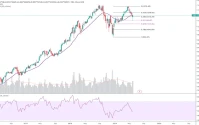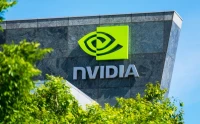Generated Title: Saylor's Moonshot: Marketing Genius or $71 Billion Bitcoin Gamble?
Michael Saylor, the Executive Chairman of Strategy (formerly MicroStrategy), has never been one to shy away from bold pronouncements, or, it seems, AI-generated videos of himself rocketing to the moon. But is this just marketing theatrics, or is there a cold, calculated strategy behind the Bitcoin boosterism? Let's dive into the numbers and see if Saylor's moon mission is a stroke of genius or a reckless gamble.
The Bitcoin Bet: A Balance Sheet Deep Dive
Strategy's Bitcoin holdings are no secret. The company currently holds 639,835 BTC, a stash worth over $71 billion at current prices. The average buy-in, according to reports, is $73,972 per BTC. A neat 50% profit margin, if you only glance at the surface. But here's where the data gets interesting.
Strategy itself is valued at around $100 billion. This means Bitcoin isn't just an investment; it's the primary asset driving the company's valuation. A company whose entire value is based on a volatile asset. That is the essence of risk. Most CEOs would downplay this. Saylor? He's embracing it, literally visualizing himself flying into space.
He even created a high-yield credit instrument called STRD (Stride Preferred Stock) to fund his Bitcoin purchases. He calls it the "fourth gear in our Bitcoin engine." Strategy upsized its stock offering to $1 Billion. The company will sell 11.76 million shares of its 10% Series A Perpetual Stride Preferred Stock (STRD), expecting to bring in an estimated $979.7 million after fees and expenses. And he’s using the money to buy more Bitcoin.
Now, let's examine that "limited" sensitivity to Bitcoin's price, as Saylor claims. STRD investors are behind STRF and STRK in terms of seniority, but ahead of common shareholders. Sounds safe enough, but what happens if Bitcoin crashes? The common shareholders are wiped out, then the STRD holders take the hit. It's a game of musical chairs, and Bitcoin's price is the music.
Altcoin Dreams and AI Hopes: The Ripple Effect
Saylor's Bitcoin bullishness has a broader impact on the crypto market. The purchase of 487 BTC worth ~$50M by MicroStrategy at an average price of $102,557 brought the total treasury to around 641,692 BTC (worth over $67B). Institutions believe Saylor’s activity is a bellwether for BTC exposure and the crypto market as a whole.

The article "Best Altcoins To Buy: Billionaire’s Investment Could Send These Three Cryptos To The Moon" suggests that a bullish Bitcoin market creates opportunities for altcoins. The article highlights DeepSnitch AI ($DSNT), Solana ($SOL), and Cardano ($ADA) as potential beneficiaries.
DeepSnitch AI, in particular, is touted as a "pick and shovel" company in the crypto-AI space. The claim is that it provides real-time AI tools for traders, leveling the playing field between retail investors and crypto whales. The presale price of $0.02244 gives it a "realistic path to be the best altcoin to buy right now," implying a 1000x potential if it reaches $20.
I've looked at hundreds of these "altcoin to the moon" articles, and the language is always the same: hype, potential, and a dash of FOMO (fear of missing out). The question is: does Saylor's Bitcoin bet genuinely lift all boats, or does it create a distorted market where speculative altcoins thrive on borrowed legitimacy?
Is It Really a "Moonshot" or Just a Gamble?
Saylor's "moonshot" imagery is compelling, but it masks the underlying risk. A significant portion of Strategy's valuation hinges on a single, volatile asset. His marketing prowess is undeniable, but it doesn't change the fundamental equation.
The question that remains is whether Saylor is a visionary who sees something others don't, or a high-stakes gambler who is willing to bet the company on his conviction. It's a strategy that could yield enormous returns, but it also carries the potential for catastrophic losses. Only time, and the Bitcoin market, will tell.
A Reality Check
At the end of the day, Saylor's a master marketer. He's selling a vision, and he's doing it well. But behind the AI-generated space flights and the bullish pronouncements, there's a company whose fate is inextricably linked to the whims of the crypto market. And that's a risk that investors need to understand, no matter how enticing the "moonshot" narrative may be.










